The National Research Council's A Framework for K-12 Science Education: Practices, Crosscutting Concepts, and Core Ideas (2012) identifies modeling as an important practice too often "underemphasized in the context of science education." According to the Framework, "engaging in the practices of science helps students understand how scientific knowledge develops; such direct involvement gives them an appreciation of the wide range of approaches that are used to investigate, model, and explain the world." The Common Core State Standards for Mathematical Practice states that mathematically proficient students should be able to model with mathematics by applying "the mathematics they know to solve problems arising in everyday life, society, and the workplace mathematics."
This Spotlight highlights NSF-funded resources and research to support modeling in science and mathematics classrooms.
In this Spotlight...
- Resources for Teaching & Learning with Models
- Interdisciplinary Challenges in Making Statistical Model-based Inferences | Blog by Ryan Seth Jones
- Featured Research
- Additional Resources
Resources For Teaching & Learning with Models
The following resources provide a sample of the products developed by NSF DRK-12-funded projects, arranged in order of lowest target grade bands.
Elementary School
 Focus on Energy
Focus on Energy
Grade Level: Elementary
Subject: Science (Physical Science)
Resource Types: Curriculum/Activities, Professional Development
The Focus on Energy project is developing resources and supports for teaching and learning about energy in grades 3-5, including a summer teacher professional development workshop, follow-up professional learning communities, and a curriculum with a carefully designed sequence of activities to support students as they develop and use a model of energy. (NSF Award #s 1418052, 1418211)
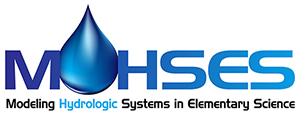 Modeling Hydrologic Systems in Elementary Science (MoHSES)
Modeling Hydrologic Systems in Elementary Science (MoHSES)
Grade Level: Elementary
Subject: Science (Earth Science)
Resource Types: Curriculum/Activities, Instructional Supports
The University of Nebraska-Lincoln and Michigan State University collaborated to engage elementary students in model-based learning about water systems through development and testing of a modeling-enhanced version of the Full Option Science System (FOSS) Water curriculum module. Freely available nstructional resources include supplemental teacher and student materials. (NSF Award # 1443223)
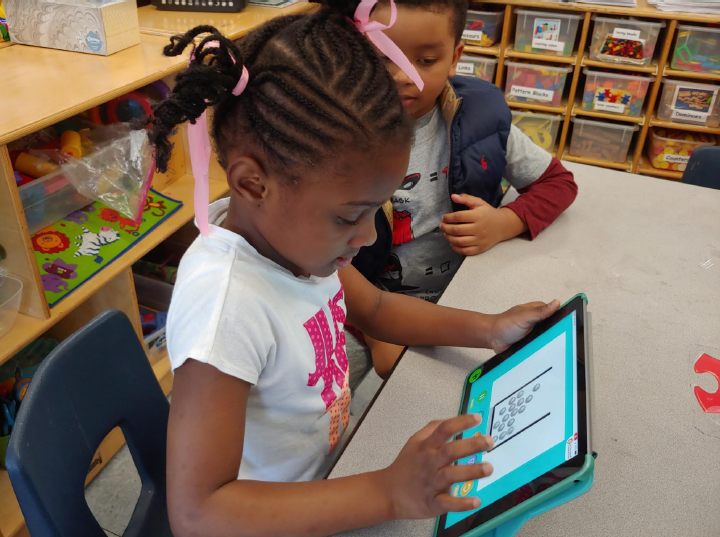
Sensing Science through Modeling Matter (S2M2)
Grade Level: Elementary
Subjects: Science (Physical Science)
Resource Types: Curriculum/Activities, Simulations, Instructional Supports
The S2M2 curriculum unit consists of three discourse-rich, model-based inquiry kindergarten lessons (Models and Modeling, States of Matter, and Phase Changes) that align with core science ideas and skills as outlined in A Framework for K-12 Science Education: Practices, Crosscutting Concepts, and Core Ideas (National Research Council, 2012) and state academic science content standards. The S2M2 curriculum includes two written documents (the S2M2 Teacher Curriculum Guide and the S2M2 Student Science Notebook) and two iPad-based applications that children use during instruction to create, revise, and record their particle models of solids, liquids, gases, and phase changes—the Thermoscope and the Particle Modeler as well as the additional iPad-based application Thermonator. (NSF Award #1621299)
Middle School
 E-Rebuild
E-Rebuild
Grade Level: Middle
Subject: Mathematics (Geometry, Ratio, Proportions)
Resource Types: Game/Simulation
eRebuild is a math learning game for students that focuses on teaching the concepts of geometry and ratios and proportions through gameplay. eRebuild is available for multiple platforms, and can be downloaded below or tried in the web browser. An account is necessary to track progress through the game and record basic gameplay statistics. (NSF Award #1720533)
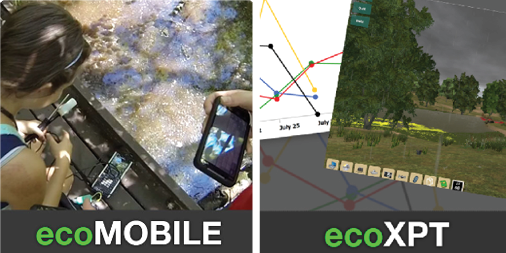 EcoMobile and EcoXPT
EcoMobile and EcoXPT
Grade Level: Middle
Subject: Science (Environmental Science)
Resource Types: Curriculum/Activities, Games/Simulations
Developed by the EcoLearn research team based out of the Harvard Graduate School of Education, these immersive virtual environments are designed to support science learning. EcoMOBILE blends virtual immersive experiences with exploration in real ecosystems supported by augmented technology. EcoXPT allows students to explore a virtual ecosystem representing a complex systems model, to make observations, understand causal relationships, and create experiments to test hypotheses. (NSF Award #s 1118530, 1416781)
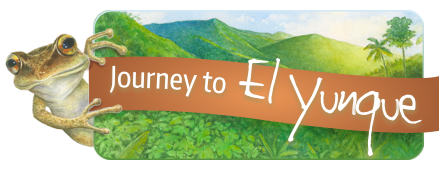 Journey to El Yunque
Journey to El Yunque
Grade Level: Middle
Subject: Science (Biology, Earth Science)
Resource Types: Curriculum/Activities, Instructional Supports
Journey to El Yunque provides a set of free, web-based investigations in which students compare scientific models to long-term data about the rainforest and construct causal models that explain trends in the long-term data. demo@elyunque.net. This project is a collaboration among The Learning Partnership, University of Puerto Rico, and Northern Illinois University. (NSF Award #s 1813802, 1821146, 0535942)
 GeoHazard: Modeling Natural Hazards and Assessing Risks
GeoHazard: Modeling Natural Hazards and Assessing Risks
Grade Level: Middle, High
Subject: Science (Earth Science)
Resource Types: Curriculum/Activities, Simulations, Modeling Tools, Instructional Supports
The Earth system models created in this project focus on the movement and growth of hurricanes, the propagation of wildfire, and the development of inland floods. Each model is embedded within a curriculum module that prompts students to experiment with initial conditions, gather evidence, and reason about the impacts and risk these natural hazards bring. As students explore environmental variables and real-world case studies, they also consider how natural hazards impact people and their communities. The Hurricane Risk & Impact module, Wildfire Model, and blog posts introducing the Hurricane module and using it to wrangle with uncertainty are currently available. (NSF Award #1812362)
 High-Adventure Science
High-Adventure Science
Grade Levels: Middle, High
Subject: Science (Earth & Space Science, Environmental Science)
Resource Types: Curriculum/Activities, Simulations
Developed by the Concord Consortium, High-Adventure Science offers free, interactive, computer-based Earth system models integrated into five-day curriculum lessons. Lesson topics include energy, climate, freshwater availability, land management, air quality, and the hunt for extraterrestrial life. Standalone models include interactives on air pollution, groundwater movement, land management, fracking, planet hunting, and climate change. (NSF Award # 0929774)
Model-Evidence Link Diagrams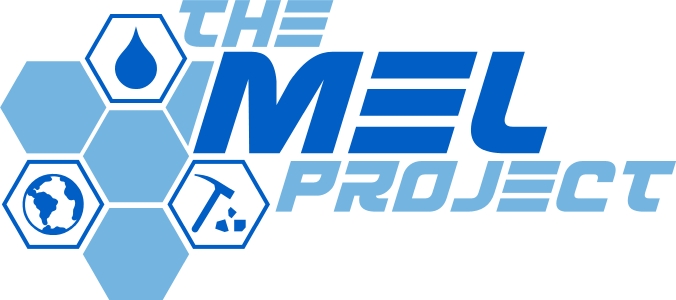
Grade Levels: Middle, High
Subject: Science (Earth & Space Science, Environmental Science)
Resource Types: Curriculum/Activities, Instructional Supports, Professional Development
Model-Evidence Link (MEL) diagrams are instructional materials designed to help students to purposefully evaluate connections between lines of evidence and scientific models in light of various alternative explanations. In these activities, students construct deep understanding of various science topics through critique, evaluation, and argumentation, resulting in productive discourse and problem solving. Classroom ready materials, teacher guides, and videos to support activity implementation, are freely available on the project website. In addition, the project's Master Teachers and research team discuss teaching, learning, and assessment with MEL diagrams in the Summer 2016 and Fall 2020 special issues of The Earth Scientist. (NSF Award #2027376)
 Model My Watershed
Model My Watershed
Grade Levels: Middle, High
Subject: Science (Earth Science, Environmental Science)
Resource Types: Modeling Tool, Simulation, Curriculum/Activities
WikiWatershed provides a watershed-modeling web app for citizens, educators, students, and municipal decision-makers to analyze real, local land use and soil data, model stormwater runoff and water-quality impacts using professional-grade models, and compare land cover changes, conservation, and/or development scenarios. (NSF Award #s 1417527, 1417722, and 1418133)
 SageModeler
SageModeler
Grade Levels: Middle, High
Subject: Science (Biology, Chemistry, Physics)
Resource Type: Modeling Tool, Curriculum/Activities
Michigan State University and the Concord Consortium collaborated to build a modeling tool and for students that allows them to easily create and test their own models without the need for programming or writing equations. Publicly available curriculum is accessible through the project website. (NSF Award #s 1417809, 1417900)
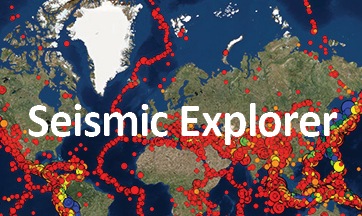 Seismic Explorer
Seismic Explorer
Grade Levels: Middle, High
Subject: Science (Earth Science)
Resource Types: Data Visualization Tool, Curriculum/Activity, Instructional Supports
SE is a data visualization tool of real-world earthquake, volcanic eruption, and plate motion data. Students use Seismic Explorer to look for patterns in earthquake and volcanic eruption distribution across Earth’s surface, examine the relationship among earthquake, volcanic eruption, and landform distributions, and explore cross-sections to investigate earthquake depth patterns. A Plate Tectonics module, "What will Earth look like in 500 million years?," helps students build a systems view of plate tectonics through focused case studies and interactions with the Seismic Explorer and Tectonic Explorer (see below) models. Blog posts are available to provide guidance around teaching Earth and environmental science remotely and tracking student work. (NSF Award # 1621176)
Tectonic Explorer Grade Levels: Middle, High
Grade Levels: Middle, High
Subject: Science (Earth Science)
Resource Type: Simulation, Curriculum/Activity, Instructional Supports
Tectonics Explorer (TE) is a dynamic model of plate interactions on an Earth-like planet. In this web-based three-dimensional simulation of multiple plates, students can change the properties of plates such as density, direction of movement, and locations of plates and continents. By experimenting with TE, students are able to witness plate interactions on a global system level, observe changes over time, and see how interactions of plates result in new landforms. A Plate Tectonics module, "What will Earth look like in 500 million years?," helps students build a systems view of plate tectonics through focused case studies and interactions with the Seismic Explorer (see above) and Tectonic Explorer models. Blog posts are available to provide an introduction to teaching with TE as well as guidance around teaching Earth and environmental science remotely and tracking student work. (NSF Award # 1621176)
 SimScientists
SimScientists
Grade Levels: Middle, High
Subject: Science (Biology, Earth Science, Physical Science)
Resource Types: Simulations, Assessments, Curriculum/Activities
Science simulations created by WestEd to explore life science, Earth science, and physical science topics. The simulations allow teachers to formatively assess students' work. (NSF Award #s 1020264, 1221614, and 1503481)
 Strategies For Using Interactive Simulations In Science Class
Strategies For Using Interactive Simulations In Science Class
Grade Levels: Middle, High
Subject: Science
Resource Types: Instructional Supports
This manual of teaching strategies is the product of a long-term project by researchers at the University of Massachusetts designed to investigate the different teaching strategies that science teachers use with simulations in the classroom. (NSF Award #s 0723709, 1222709)
High School
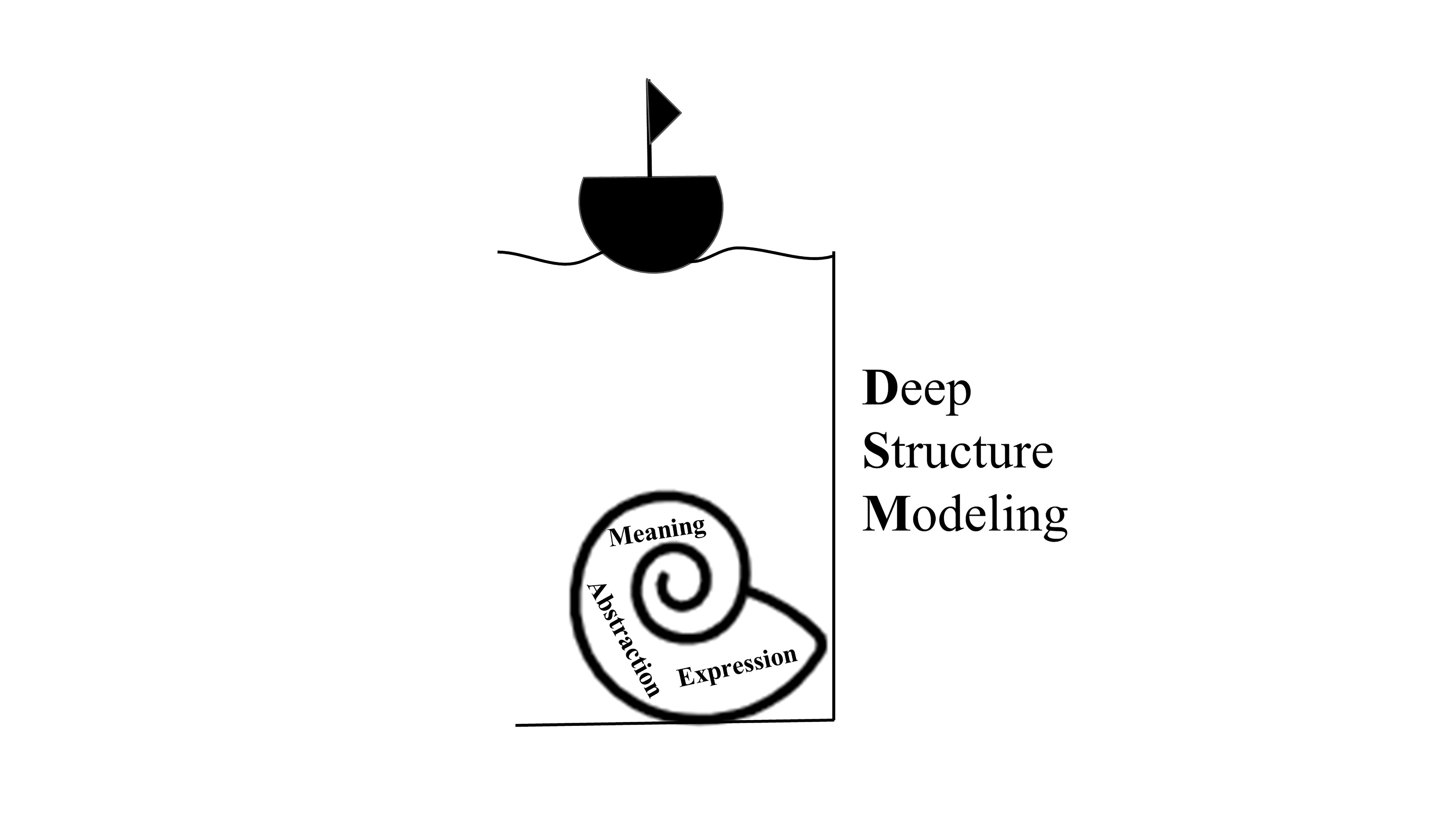 AiMs Modeling Curriculum
AiMs Modeling Curriculum
Grade Level: High
Subject: Science (Biology)
Resource Types: Curriculum/Activities, Instructional Supports
The Deep Structure Modeling (DSM) project addresses the pressing need to more effectively organize science teaching and learning around “big ideas” that run through disciplines. Big ideas are important tools for learning because they enable students to organize and link information within a consistent knowledge framework. The project includes a freely available two-week unit on teaching cellular respiration by modeling the big idea of energy. (NSF Award #s 2010223, 2010334)
 Easy Global Climate Modeling (EzGCM)
Easy Global Climate Modeling (EzGCM)
Grade Level: High
Subject: Science (Earth & Environmental Science)
Resource Types: Curriculum/Activities, Simulations
EzGCM is a climate modeling toolkit that allows students to examine climate change using the same tools and following the same scientific processes as climate scientists. In this curriculum module students will run simulations, process and visualize data, and communicate their results. EzGCM is a server-based solultion of the Educational Global Climate Modeling Project. (NSF Award #s 1720838, 1719872)
 Interactions
Interactions
Grade Level: High
Subject: Science (Physical Science)
Resource Types: Curriculum/Activities, Instructional Supports
Interactions is a collaborative project between Michigan State University and Concord Consortium that engages students in modeling and scientific explanation through exploring how the unseen world of atomic level interactions and energy transformations are responsible for much of what we observe around us. (NSF Award # 1232388)
Interdisciplinary Challenges in Making Statistical Model-based Inferences
Ryan Seth Jones, Assistant Professor, Middle Tennessee State University
 If any year has highlighted the need for a data literate society, and the long road we before us to get there, it’s been 2020. A global pandemic with a new virus required scientists around the world to make predictions and decisions based on a diverse set of quickly evolving and competing data models. The uncertainty in the models was publicly visible because of the widespread policy implications. However, without widespread understanding about how researchers build data models and make claims in the midst of uncertainty most were forced to adopt either “trust the scientists” or “the scientists don’t know that they are talking about” positions. Very few were unable to honestly engage with the models and claims that were turning the entire world upside down, creating a crisis of shared trust in the institutions that use science to guide policy. But honest engagement with the models is a challenge because making inferences with data is an interdisciplinary activity that requires the coordination of a diverse set of concepts and practices. Read more
If any year has highlighted the need for a data literate society, and the long road we before us to get there, it’s been 2020. A global pandemic with a new virus required scientists around the world to make predictions and decisions based on a diverse set of quickly evolving and competing data models. The uncertainty in the models was publicly visible because of the widespread policy implications. However, without widespread understanding about how researchers build data models and make claims in the midst of uncertainty most were forced to adopt either “trust the scientists” or “the scientists don’t know that they are talking about” positions. Very few were unable to honestly engage with the models and claims that were turning the entire world upside down, creating a crisis of shared trust in the institutions that use science to guide policy. But honest engagement with the models is a challenge because making inferences with data is an interdisciplinary activity that requires the coordination of a diverse set of concepts and practices. Read moreFeatured Research
Learn more about some of the recent, ongoing, and newly funded DRK-12 projects who are ressearching innovations in scientific and mathematical modeling education.
- AiMs: Research on the Utility of Abstraction as a Guiding Principle for Learning About the Nature of Models in Science Education (PI: Daniel Capps)
- CliMES: High School Students' Climate Literacy Through Epistemology of Scientific Modeling (PIs: Mark Chandler, Corey Forbes)
- Developing a Generalized Storyline that Organizes the Supports for Evidence-based Modeling of Long-Term Impacts of Disturbances in Complex Systems (PI: Steven McGee)
- New Award! Developing a Modeling Orientation to Science: Teaching and Learning Variability and Change in Ecosystems (PIs: Richard Lehrer, Alison Miller, Leigh Peake)
- Engaging Students in Scientific Practices: Evaluating Evidence and Explanation in Secondary Earth and Space Science (PI: Doug Lombardi)
- New Award! EQ-STEMM: Advancing Equity and Strengthening Teaching through Elementary Mathematical Modeling (PI: Erin Turner)
- New Award! GeoCRAFT: Geological Construction of Rock Arrangements from Tectonics (PI: Amy Pallant)
- GEODE: Geological models for Explorations of Dynamic Earth (PI: Amy Pallant)
- GeoHazard: Modeling Natural Hazards and Assessing Risks (PI: Amy Pallant)
- New Award! How Deep Structural Modeling Supports Learning with Big Ideas in Biology (PIs: Daniel Capps, Jonathan Shemwell)
- Mathematical Learning via Architectural Design and Modeling Using E-Rebuild (PI: Fengfeng Ke)
- Sensing Science through Modeling Matter (PI: Carolyn Staudt)
- New Award! Supporting Model Based Inference as an Integrated Effort Between Mathematics and Science (PI: Ryan Seth Jones)
AiMs: Research on the Utility of Abstraction as a Guiding Principle for Learning About the Nature of Models in Science Education
PI: Daniel Capps | Co-PI: Jonathan Shemwell
Grade Levels: High
Target Audience: Students
STEM Discipline: Science
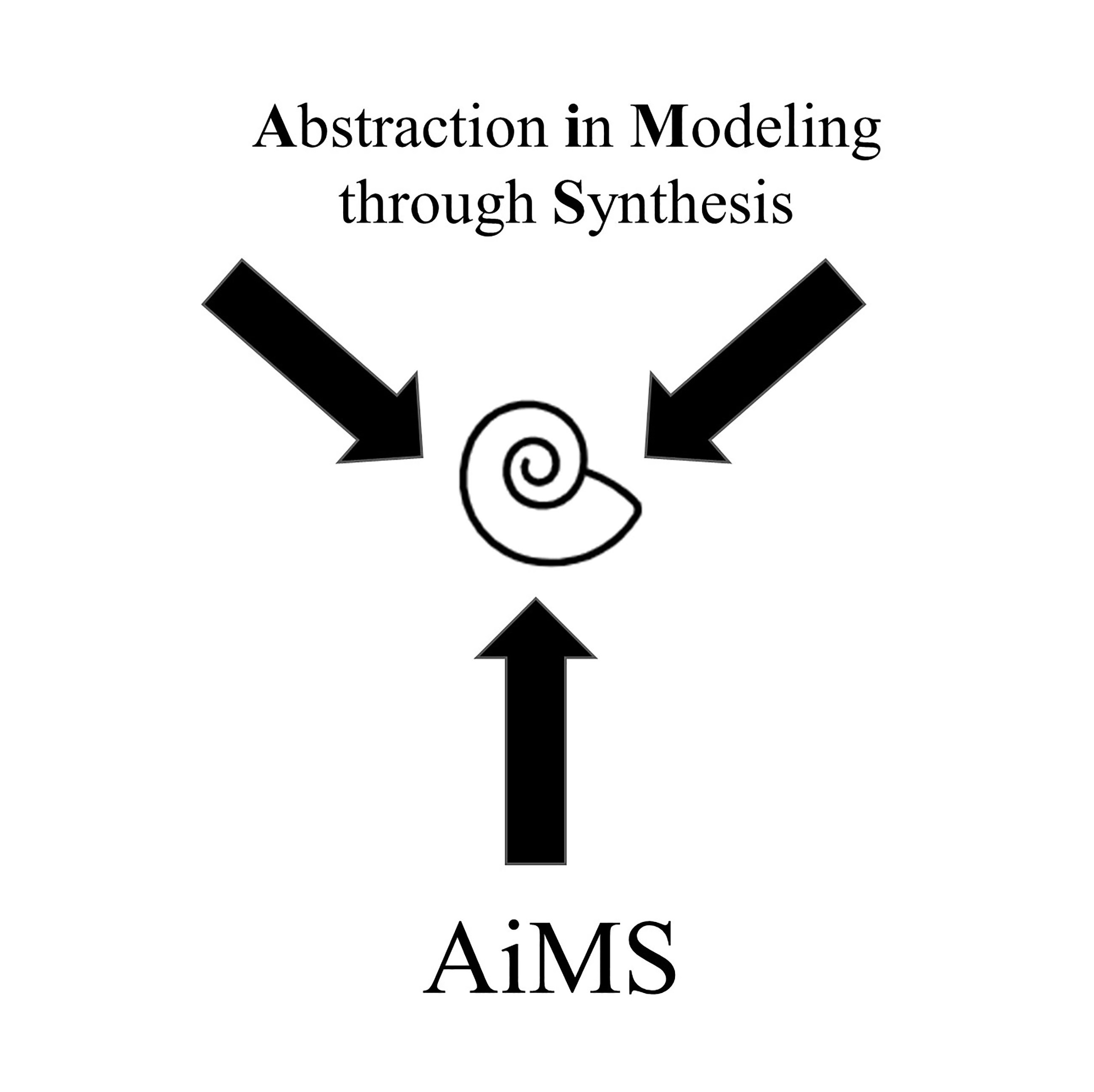 Description: Abstraction in Modeling through Synthesis (AiMS) built knowledge about the value that abstraction can bring to modeling instruction. Models are abstractions because they represent select information, or structure, that has been pulled away from their referents. AiMS involved studies of what students should know about abstraction, how readily they could learn about abstraction, and the ways in which modeling processes that emphasize abstraction can benefit learning. As part of these studies, researchers collaborated with classroom teachers to design an abstracting approach to explanatory modeling, called synthesis, that is featured in project publications. AiMS, which has transitioned to the Deep Structure Modeling project (DSM), was a collaboration between the University of Georgia and The University of Alabama.
Description: Abstraction in Modeling through Synthesis (AiMS) built knowledge about the value that abstraction can bring to modeling instruction. Models are abstractions because they represent select information, or structure, that has been pulled away from their referents. AiMS involved studies of what students should know about abstraction, how readily they could learn about abstraction, and the ways in which modeling processes that emphasize abstraction can benefit learning. As part of these studies, researchers collaborated with classroom teachers to design an abstracting approach to explanatory modeling, called synthesis, that is featured in project publications. AiMS, which has transitioned to the Deep Structure Modeling project (DSM), was a collaboration between the University of Georgia and The University of Alabama.
Products: In addition to a two-week unit on teaching desert formation through synthesis modeling, the project resulted in a numbe rof publications and presentations.
- Publications
- Capps, D.K., & Shemwell, J.T. (2020). Moving beyond the model as copy problem: Investigating the utility of teaching about structure-preserving transformations in the model-referent relationship. International Journal of Science Education, 42(12), 2008-2031.
- Shemwell, J.T., & Capps, D.K. (2019). Learning Abstraction as a Modeling Competence. In D. Kruger, J. van Driel, & A. Upmeier zu Belzen (Eds.), Towards a Competence-Based View on Models and Modeling in Science Education (pp. 291-307). Springer, Cham.
- Conference Presentations
- Fackler, A. K., Coogler, C., Capps, D., & Shemwell, J. (2021). Learning Cellular Respiration Through Models and Modeling: A Case of and for Constructing Gapless Explanations. Paper to be presented at the annual meeting of the American Educational Research Association. [virtual]
- Fackler, A. K., Capps, D., & Shemwell, J. (2021). Using Rasch to Explore Students’ Understanding of Energy: A Modeling-Based Intervention Study. Paper to be presented at the annual meeting of the American Educational Research Association. [virtual]
- Shemwell, J., Capps, D., Fackler, A. K., Love, K., May, M. M., Smith, E., & Coogler, C. (2020). How do you teach cellular respiration? Harnessing models for understanding. Workshop to be held at the NSTA Conference. Boston, MA. [conference cancelled, COVID-19]
- Shemwell, J.T., Capps, D.K., Coogler, C., Fackler, A.K. (2020). How modeling can help students condense meaning within language. Paper to be presented at the National Association for Research in Science Teaching. Portland, OR. [conference cancelled, COVID-19]
- See All
CliMES: High School Students' Climate Literacy Through Epistemology of Scientific Modeling
PIs: Mark Chandler, Corey Forbes
Grade Levels: High
Target Audience: Teachers and students
STEM Discipline: Science
 Description: To study Earth’s climate, scientists rely on robust, data-intensive, computer-based models. Modeling is a core scientific practice emphasized in the Next Generation Science Standards. However, there is a need to both cultivate and better understand the design of science learning environments that promote students’ model-based reasoning about climate. Students must develop knowledge of both the conceptual and epistemic underpinnings of climate science, the latter of which foregrounds how models are used to study the Earth’s climate. Through the High School Students' Climate Literacy Through Epistemology of Scientific Modeling (CliMES) project, we are developing, implementing, and studying a 4-week climate curriculum module designed around EzGCM (Easy Global Climate Modeling), a web-based climate modeling suite intended to provide non-scientists experiences with climate modeling, in secondary science classrooms. The project will impact secondary teachers and students in Nebraska, leveraging a new partnership between Columbia University, the University of Nebraska-Lincoln, and school districts.
Description: To study Earth’s climate, scientists rely on robust, data-intensive, computer-based models. Modeling is a core scientific practice emphasized in the Next Generation Science Standards. However, there is a need to both cultivate and better understand the design of science learning environments that promote students’ model-based reasoning about climate. Students must develop knowledge of both the conceptual and epistemic underpinnings of climate science, the latter of which foregrounds how models are used to study the Earth’s climate. Through the High School Students' Climate Literacy Through Epistemology of Scientific Modeling (CliMES) project, we are developing, implementing, and studying a 4-week climate curriculum module designed around EzGCM (Easy Global Climate Modeling), a web-based climate modeling suite intended to provide non-scientists experiences with climate modeling, in secondary science classrooms. The project will impact secondary teachers and students in Nebraska, leveraging a new partnership between Columbia University, the University of Nebraska-Lincoln, and school districts.
Response to COVID-19 & Other Key Challenges: EzGCM and the learning activities can feel disconnected from the social, political, and economic issues that are relevant to students' everyday lives. Therefore, the enacted curriculum needs to incorporate stories and scenarios that illustrate how Earth’s changing climate impacts students and relates to their day-to-day experiences. Without this element, students may not be able to think about and take ownership of their individual roles in this global phenomenon (e.g.,“Why should I care?”). Additionally, doing so helps teachers use EzGCM and the project curriculum in a variety of courses and science subjects. This alleviates another challenge to teaching about Earth's climate system in high school classrooms - the relative absence of secondary Earth science/geoscience courses.
Products: Easy Global Climate Modeling Curriculum
Publications
- Bhattacharya, D., Carroll-Steward, K., & Forbes, C.T. (in press). Empirical research on K-16 climate education: A systematic review of the literature. In Journal of Geoscience Education.
- Bhattacharya, D., Chandler, M., Carroll-Steward, K., & Forbes, C.T. (2020). Investigating the phenomenon of increasing surface air temperatures using a global climate modeling approach. The Science Teacher, 88(1), 58-66.
- Forbes, C.T., Chandler, M., Blake, J., Bhattacharya, D., Carroll-Steward, K., Johnson, V., DeGrand, T., Mason, W., and Murrow, B. (2020). Fostering climate literacy with global climate models in secondary science classrooms: Insights from a collaborative partnership. In J. Henderson & A. Drewes (Eds.), Teaching Climate Change in the United States (pgs. 29-43) . Routledge; New York.
- Bhattacharya, D., Carroll-Steward, K., Sutter, A., Chandler, M., & Forbes, C.T. (2018). Climate literacy: Insights from research on K-16 climate education. Green Schools Catalyst Quarterly, V(4), 26-35.
Developing a Generalized Storyline that Organizes the Supports for Evidence-based Modeling of Long-Term Impacts of Disturbances in Complex Systems
PI: Steven McGee | Co-PIs: Anne Britt, Amanda Durik
Grade Levels: Middle
Target Audience: Teachers and students
STEM Discipline: Science
 Description: Journey to El Yunque seeks to develop the scientific practice of model-based reasoning. Through a case study approach, students use and develop models to understand systems disturbance. By immersing students in phenomena at the forefront of the Long-Term Ecological Research program, modeling practices become an authentic experience for students. For example, the back-to-back hurricane strikes of Irma and Maria in Puerto Rico created much consternation in the media and general public about the ability of the forests to recover. Through modeling and scientific argumentation, students develop model-based explanations about the resilience of a system in the face of disturbances. Journey to El Yunque provides a set of free, web-based investigations in which students compare scientific models to long-term data about the rainforest and construct causal models that explain trends in the long-term data. This project is a collaboration among The Learning Partnership, University of Puerto Rico, and Northern Illinois University.
Description: Journey to El Yunque seeks to develop the scientific practice of model-based reasoning. Through a case study approach, students use and develop models to understand systems disturbance. By immersing students in phenomena at the forefront of the Long-Term Ecological Research program, modeling practices become an authentic experience for students. For example, the back-to-back hurricane strikes of Irma and Maria in Puerto Rico created much consternation in the media and general public about the ability of the forests to recover. Through modeling and scientific argumentation, students develop model-based explanations about the resilience of a system in the face of disturbances. Journey to El Yunque provides a set of free, web-based investigations in which students compare scientific models to long-term data about the rainforest and construct causal models that explain trends in the long-term data. This project is a collaboration among The Learning Partnership, University of Puerto Rico, and Northern Illinois University.
Initial Findings Related to Modeling: Setting the context of the anchoring phenomenon is important for shaping students’ modeling investigations both in terms of their role as scientist (McGee, Durik, Zimmerman, McGee-Tekula, and Duck, 2018) and providing engaging background materials (McGee, Durik, and Zimmerman, 2015).
McGee, S., Durik, A. M., and Zimmerman, J. K. (2015, April 11-14). The Impact of Text Genre on Science Learning in an Authentic Science Learning Environment [Paper presentation]. 2015 National Association of Research in Science Teaching Annual Meeting, Chicago, IL. https://www.jointhepartnership.net/publications/the-impact-of-text-genr…
McGee, S., Durik, A. M., Zimmerman, J. K., McGee-Tekula, R., & Duck, J. (2018). Engaging Middle School Students in Authentic Scientific Practices Can Enhance Their Understanding of Ecosystem Response to Hurricane Disturbance. Forests 9(10), 658. https://doi.org/10.3390/f9100658
Response to COVID-19 & Other Key Challenges: Engaging students with authentic phenomena at the forefront of scientific research introduces tremendous complexity that can be overwhelming for students. Students have shown competency in identifying the components of the phenomena that should be modeled and being able to explain the relationships among the components of the model. However, they find it challenging to make the connections to the phenomenon to see how the model serves as evidence to explain the phenomenon. We are developing scaffolds to support students in making connections between background information and evidence from the models to develop arguments to explain the phenomenon.
Products: Journey to El Yunque Investigations | Videos | Publications (see Initial Findings, above)
Developing a Modeling Orientation to Science: Teaching and Learning Variability and Change in Ecosystems
PIs: Richard Lehrer, Alison Miller, Leigh Peake | Co-PI: Dan Damelin, Amanda Dickes, William Finzer, Christine Voyer
Grade Levels: Elementary, Middle
Target Audience: Curriculum developers, professional development providers, learning researchers
STEM Discipline: Science
 Description: This project leverages GMRI’s longstanding classroom-based citizen science program, and its associated study of ecosystems conducted by practicing scientists, as a promising context for engaging students and teachers in the construction and revision of models to explain variability and change in ecosystems. Students will conduct first-hand investigations of contemporary scientific interest, such as how invasive species affect ecosystems, and will develop models to account for patterns and trends in data they generate in the course of investigation of a nearby ecosystem. Partner scientists will provide data of greater scale in time and space, so that student models generated in a particular locale can be tested and revised in light of scientists’ data at scale. In tandem, we will collaborate with teachers to explore forms of instructional practice that help students initiate and sustain the cycles of modeling envisioned. We anticipate broader effects on students’ understandings of and interest in science.
Description: This project leverages GMRI’s longstanding classroom-based citizen science program, and its associated study of ecosystems conducted by practicing scientists, as a promising context for engaging students and teachers in the construction and revision of models to explain variability and change in ecosystems. Students will conduct first-hand investigations of contemporary scientific interest, such as how invasive species affect ecosystems, and will develop models to account for patterns and trends in data they generate in the course of investigation of a nearby ecosystem. Partner scientists will provide data of greater scale in time and space, so that student models generated in a particular locale can be tested and revised in light of scientists’ data at scale. In tandem, we will collaborate with teachers to explore forms of instructional practice that help students initiate and sustain the cycles of modeling envisioned. We anticipate broader effects on students’ understandings of and interest in science.
Responding to COVID-19 & Other Key Challenges: 1) Our research design focused on classroom observation of student modeling and on-the-spot student interviews in order to surface detail about student thinking. With COVID-19 conditions in schools, we are reordering work on the project to allow for future classroom-based work. 2) Supporting teachers and students to move flexibly between real-world phenomena (ecosystem change) and models at various levels of abstraction and then relating those models to one another and to data analysis. 3) Understanding teacher misconceptions regarding teaching and learning modeling deeply enough to design meaningful supports for them to discern student understanding.
Products: We anticipate creating curriculum for citizen science investigations in Maine that incorporate modeling variability in the target ecosystems, guidance for incorporating modeling into authentic science investigations more broadly, and guidance for working with teachers around modeling variability in ecosystems suitable for a number of professional learning environments.
Engaging Students in Scientific Practices: Evaluating Evidence and Explanation in Secondary Earth and Space Science
PI: Doug Lombardi | Co-PI: Insook Han
Grade Levels: Middle, High
Target Audience: Earth and environmental science teachers and students. Our field-tested and classroom-ready materials are also applicable to those who teach and learn about ecology, sustainability, and scientific thinking.
STEM Discipline: Science
 Description: Critique and evaluation are central to the scientific thinking and science learning. Yet, it can be challenging for students to think critically and scientifically about many science topics. To facilitate teaching and learning about important socioscientific topics (e.g., climate change, freshwater resources, fracking, universe origins, and fossil dating), we have developed instructional scaffolds. Called Model-Evidence Link (MEL) diagrams, these instructional materials help students to purposefully evaluate connections between lines of evidence and scientific models in light of various alternative explanations. When engaging in these MEL activities, students construct deep understanding of various science topics through critique, evaluation, and argumentation, resulting in productive discourse and problem solving.
Description: Critique and evaluation are central to the scientific thinking and science learning. Yet, it can be challenging for students to think critically and scientifically about many science topics. To facilitate teaching and learning about important socioscientific topics (e.g., climate change, freshwater resources, fracking, universe origins, and fossil dating), we have developed instructional scaffolds. Called Model-Evidence Link (MEL) diagrams, these instructional materials help students to purposefully evaluate connections between lines of evidence and scientific models in light of various alternative explanations. When engaging in these MEL activities, students construct deep understanding of various science topics through critique, evaluation, and argumentation, resulting in productive discourse and problem solving.
Initial Findings Related to Modeling: In over 8 years of design-based investigations situated in middle and high school classrooms, our research clearly shows that use of the MEL instructional activities deepens students knowledge about complex and controversial scientific topics through productive and critical negotiation. Shifts in understanding are meaningful, with students increasing their understanding by about 5% to 10% in only 90 minutes of instruction. Although the MEL activities, in and of themselves, are not a silver bullet for classroom instruction, they are effective component in a unit of instruction by engaging students in productive and collaborative argumentation.
Responding to COVID-19 & Other Key Challenges: In the current COVID-19 context, many students and teachers are engaged in remote, online learning. Currently the project is developing virtual MEL materials that can be used in online and hybrid learning modes, as well as in face-to-face classroom instruction. These virtual materials are built upon the Google Enterprise for Suite for Education, which is available in virtually all school settings. As with our traditional pencil-and-paper materials, these virtual MEL materials will be freely available through our project website after pilot testing is completed in winter 2021.
Products: Project Website | Teaching Resources | Professional Development Materials | Special Issues of The Earth Scientist: Summer 2016 & Fall 2020
EQ-STEMM: Advancing Equity and Strengthening Teaching through Elementary Mathematical Modeling (EQ-STEMM)
PI: Erin Turner | Co-PI: Cynthia Anhalt
Grade Levels: Elementary
Target Audience: Mathematics Teacher Educators, Mathematics Education Researchers, Elementary Mathematics Teachers
STEM Discipline: Mathematics
 Description: Advancing Equity and Strengthening Teaching through Elementary Mathematical Modeling (EQ-STEMM) focuses on equity-centered professional development designed to improve mathematics teaching and learning through mathematical modeling in grades K-5. Mathematical modeling is an iterative process involving formulation, testing, validation, and revision of mathematical models to analyze real-world situations and inform decision-making. The goals of EQ-STEMM include to: a) develop an innovative, equity-oriented professional development model that includes on-line blended learning spaces for teachers in diverse settings; b) refine tools to help teachers advance equitable participation and develop math modeling competencies, and c) increase learning of mathematical modeling for culturally and linguistically diverse children. EQ-STEMM incorporates practice-based professional learning, and a focus on funds of knowledge to support mathematical modeling instruction. Across the project, the professional development model will be tested in varied contexts to support its usability. 2800 students and 112 teachers from diverse geographic, racial and cultural backgrounds will participate.
Description: Advancing Equity and Strengthening Teaching through Elementary Mathematical Modeling (EQ-STEMM) focuses on equity-centered professional development designed to improve mathematics teaching and learning through mathematical modeling in grades K-5. Mathematical modeling is an iterative process involving formulation, testing, validation, and revision of mathematical models to analyze real-world situations and inform decision-making. The goals of EQ-STEMM include to: a) develop an innovative, equity-oriented professional development model that includes on-line blended learning spaces for teachers in diverse settings; b) refine tools to help teachers advance equitable participation and develop math modeling competencies, and c) increase learning of mathematical modeling for culturally and linguistically diverse children. EQ-STEMM incorporates practice-based professional learning, and a focus on funds of knowledge to support mathematical modeling instruction. Across the project, the professional development model will be tested in varied contexts to support its usability. 2800 students and 112 teachers from diverse geographic, racial and cultural backgrounds will participate.
Products: In addition to research, EQ-STEMM will produce the following products for practitioners: a) an equity-oriented blended professional development model that includes tools to support participation and develop marth modeling competencies; b) formative assessment probes to assess student learning; c) a project website with mathematical modeling tasks, student work samples, and video exemplars.
EQ-STEMM builds on two previously funded NSF projects focused on mathematical modeling in the elementary grades (M2C3-Mathematical modeling with cultural and community contexts (CORE), and IMMERSION (STEM-C).
GeoCRAFT: Geological Construction of Rock Arrangements from Tectonics
PI: Amy Pallant | Co-PIs: Hee-Sun Lee, Scott McDonald
Grade Levels: Middle, High
Target Audience: Earth science teachers and students
STEM Discipline: Science
Description: GeoCRAFT plans to develop a dynamic interactive model embedding rock formation within the plate tectonics system that will allow students to investigate the evolution of rock sequences created under certain tectonic conditions. GeoCRAFT hopes to transcend the typical approach in classrooms by allowing students to connect geologic processes with the rock and land formations. Rather than simply being shown static images of, say, a rock outcrop with defined layers of different rocks and explaining how the layers formed, students will be able to create a simulation and watch similar layers form before their eyes. And by interacting with the Tectonic Rock Explorer model, students will be able to tie together plate tectonics and rock formation and to reason about the kinds of rocks that are created under specific tectonic situations, much like geoscientists do.
Products: Project Website | Pallant, A. (2020). New project will transform how plate tectonics and the rock cycle are taught.
GEODE: Geological models for Explorations of Dynamic Earth
PI: Amy Pallant | Co-PIs: Hee-Sun Lee, Scott McDonald
Grade Levels: Middle, High
Target Audience: Earth science teachers and students
STEM Discipline: Science
 Description: The Geological Models for Explorations of Dynamic Earth project also known as GEODE has developed a curriculum module called “What will Earth look like in 500 million years?” designed to transform how plate tectonics is introduced in Earth Science classrooms and research the role of two web-based tools that were designed to help students visualize what takes place both at and below the Earth’s surfaces as plates move and interact with each other. The first tool, Seismic Explorer, is an easy to use data visualization tool that students can use to investigate patterns of earthquakes, volcanic eruptions and plate motion. The second, Tectonic Explorer, is a unique 3-dimensional interactive plate tectonics computational model and simulation which helps students explore how motions of plates in different arrangements can result in various land formations and patterns of geologic events found on Earth.
Description: The Geological Models for Explorations of Dynamic Earth project also known as GEODE has developed a curriculum module called “What will Earth look like in 500 million years?” designed to transform how plate tectonics is introduced in Earth Science classrooms and research the role of two web-based tools that were designed to help students visualize what takes place both at and below the Earth’s surfaces as plates move and interact with each other. The first tool, Seismic Explorer, is an easy to use data visualization tool that students can use to investigate patterns of earthquakes, volcanic eruptions and plate motion. The second, Tectonic Explorer, is a unique 3-dimensional interactive plate tectonics computational model and simulation which helps students explore how motions of plates in different arrangements can result in various land formations and patterns of geologic events found on Earth.
Initial Findings Related to Modeling: The goal of the GEODE curriculum is to help students develop causal, mechanistic explanations of tectonic phenomena based on the whole-earth plate system perspective. We developed and tested a construct that captures students’ underlying ability to causally and mechanistically explain the formation of landforms (mid-ocean ridges, ocean basis, high mountain ranges, deep ocean trenches, and volcanoes), the occurrence and formation of seismic activities, and the motions of plates near convergent, divergent, and transform boundaries based on thermodynamic and gravitational forces. To validate the Tectonic Plate System (TPS) construct, we developed an instrument consisting of 25 items: 16 multiple choice items and 9 open-ended explanation items and analyzed 1,179 middle and high school students’ responses to the instrument. We psychometrically validated the TPS construct by applying the Rasch-Partial Credit Model analyses. Results indicate that the construct is unidimensional, fits the Rasch-PCM model, and has a reliability of 0.88.
During the 2019-2020 school year, more than 14,000 students taught by 265 teachers accessed the GEODE module. Among these teachers, we are currently analyzing 26 focus teachers whose 1098 students took the TPS instrument as pretest and posttest. We analyzed students’ performances on the 16 multiple choice items. A total score for the 16 multiple choice items was 26. According to the pairs-sample t-test, students made statistically significant gains from the pretest (M = 9.58, SD = 3.54) to the posttest (M = 13.72, SD = 5.25), t(1097) = 28.28, p < 0.001. The effect size estimated using Cohen’s d was 0.92 SD. We applied repeated measures According to Wilcoxon signed ranks tests, students made statistically significant gains in each of the 16 multiple choice items, p < 0.001.
Responding to COVID-19 & Other Key Challenges: We are well-poised to deal with the COVID-19 crisis, not because we anticipated a pandemic, but because our model-based Plate Tectonics student module was designed to both run online and support teachers prior to and during classroom implementations. Our Teacher Edition prepares teachers to use the module with deep background on science content, tips and strategies for using models, and exemplar student answers. In addition, teachers can lean on our easy-to-use teacher dashboard to track their students’ progress remotely and in real time by viewing student responses to multiple-choice, free response, and annotated screenshot questions.
Products: Project Website | Plate Tectonics Curriculum Module | Seismic Explorer | Tectonic Explorer
- Blog Posts
- Publications
- McDonald, S., Wray, K., McCausland, J., Bateman, K., Pallant, A., & Lee, H.-S. (2020). Taking up the mantle of knowing: Supporting student engagement in progressive scientific discourse in geoscience. In M. Gresalfi and I. S. Horn (Eds.), The Interdisciplinarity of the Learning Sciences, 14th International Conference of the Learning Sciences (ICLS) 2020, Vol. 1 (pp. 565-568). Nashville, TN: International Society of the Learning Sciences.
- Lee, H.-S. (2020). Making uncertainty accessible to science students. @Concord, 23(3), 14-15.
- McDonald, S. (2020). Doing geosciences the way scientists do. @Concord, 23(3), 4-5.
- Lord, T. (2020). Seismic shifts in supporting teachers in earth science classrooms. @Concord, 23(3), 6-7.
- Pallant, A. (2020). Perspective: Transforming earth science education with technology. @Concord, 23(3), 2-3
GeoHazard: Modeling Natural Hazards and Assessing Risks
PI: Amy Pallant | Co-PIs: Elaine Larson, Hee-Sun Lee, Carla McAuliffe, Scott McDonald
Grade Levels: Middle, High
Target Audience: Earth science teachers and students
STEM Discipline: Science
 Description: The Geohazard project seeks to allow students to investigate fundamental science concepts surrounding natural hazards, risk, and impact. Studying the processes underlying natural hazards, as well as the relationship between humans and the environment, enriches Earth science curricula and provides students with valuable insights into the impact of extreme natural events on humankind. The three unique, data-driven Earth system models created in this project focus on the movement and growth of hurricanes, the propagation of wildfire, and the development of inland floods. Each model is embedded within a curriculum module that prompts students to experiment with initial conditions, gather evidence, and reason about the impacts and risk these natural hazards bring. As students explore environmental variables and real-world case studies, they also consider how natural hazards impact people and their communities.
Description: The Geohazard project seeks to allow students to investigate fundamental science concepts surrounding natural hazards, risk, and impact. Studying the processes underlying natural hazards, as well as the relationship between humans and the environment, enriches Earth science curricula and provides students with valuable insights into the impact of extreme natural events on humankind. The three unique, data-driven Earth system models created in this project focus on the movement and growth of hurricanes, the propagation of wildfire, and the development of inland floods. Each model is embedded within a curriculum module that prompts students to experiment with initial conditions, gather evidence, and reason about the impacts and risk these natural hazards bring. As students explore environmental variables and real-world case studies, they also consider how natural hazards impact people and their communities.
Initial Findings Related to Modeling:Students who participated in our 2019-2020 classroom implementations made significant gains on understanding hurricane hazards, risks, and impacts as measured by our hurricane instrument. One hundred ninety-three students completed the pretest and posttest. Among them, 52% were male, 35% non-white students; 6% were English Language Learners; 94% used computers for science learning prior to the hurricane module. The hurricane hazard instrument consisted of 29 items: 13 multiple choice items, 6 true/false items, and 10 open-ended explanation items. The reliability among the items was 0.78 using Cronbach’s alpha. The mean of pretest scores was 27.5 with a standard deviation of 5.9 and that of posttest scores was 34.2 with a standard deviation of 6.6. The Effect Size for the student pre-posttest gains (measured in Cohen’s d =mean difference divided by the pooled standard deviation) was 0.97 SD. We also applied the Wilcoxon matched-pair signed rank test to each item to see whether students made significant changes at the item level. On 22 out of 29 items students made significant gains from pre to posttest. Students made significant gains on expressing their reasoning about hazards, risks, and impacts in all explanation items.
Responding to COVID-19 & Other Key Challenges: GeoHazard focuses on the risks and impacts of natural hazards. While a pandemic is not one of the topics covered in our model-based curriculum, it was a fitting phenomenon to start our summer workshop. Despite the challenges of pivoting from face-to-face to fully remote, this week-long session was successful. We continue to engage and support our teachers as they implement our materials with students through monthly webinars, email check-ins, and online usability test sessions. As we have in the past, we collect teacher feedback on classroom implementations through extensive online post-surveys and follow-up telephone interviews.
Products: Project Website | Hurricane Model, Curriculum, & Resources | Wildfire Model
- Blog Posts
- Publications
- Lore, C. (2020). Exploring the spread of wildfires and interpreting their risks. @Concord, 23(3), 8-9.
How Deep Structural Modeling Supports Learning with Big Ideas in Biology
PIs: Daniel Capps, Jonathan Shemwell
Grade Level: High
Target Audience: Biology students
STEM Discipline: Science
 Description: The Deep Structure Modeling (DSM) project addresses the pressing need to more effectively organize science teaching and learning around “big ideas” that run through disciplines. Big ideas are important tools for learning because they enable students to organize and link information within a consistent knowledge framework. However, finding ways to teach big ideas effectively is a significant challenge. In DSM we strive to meet this challenge through modeling. Specifically, students synthesize big ideas by abstracting them as deep structures within sets of examples that contain them. As learners apprehend a deep structure within the examples, they use the tools and procedures of explanatory modeling to express and develop it. The result is a big idea that is flexible, meaningful, and easy to express, providing a strong framework for making sense of new information. DSM is a collaboration between The University of Alabama and the University of Georgia.
Description: The Deep Structure Modeling (DSM) project addresses the pressing need to more effectively organize science teaching and learning around “big ideas” that run through disciplines. Big ideas are important tools for learning because they enable students to organize and link information within a consistent knowledge framework. However, finding ways to teach big ideas effectively is a significant challenge. In DSM we strive to meet this challenge through modeling. Specifically, students synthesize big ideas by abstracting them as deep structures within sets of examples that contain them. As learners apprehend a deep structure within the examples, they use the tools and procedures of explanatory modeling to express and develop it. The result is a big idea that is flexible, meaningful, and easy to express, providing a strong framework for making sense of new information. DSM is a collaboration between The University of Alabama and the University of Georgia.
Products: Cellular Respiration Curriculum Unit | Publications coming soon! See related publications from the AiMs project.
Mathematical Learning via Architectural Design and Modeling Using E-Rebuild
PI: Fengfeng Ke | Co-PIs: Russell Almond, Kathleen Clark, Gordon Erlebacher, Valerie Shute
Grade Level: Middle
Target Audience: Students
STEM Discipline: Mathematics
 Description: This project will explore the learning of mathematical problem solving through architectural tasks in an online simulation game, E-Rebuild. There is a need to connect mathematics to real world contexts and problems. In the game-based architectural simulation, students will be able to complete tasks such as building and constructing structures while using mathematics and problem solving. This learning platform will be flexible so teachers can customize tasks for their students. The project will explore how students learn mathematical problem solving during architectural structure building in E-Rebuild and how the game-based learning platform can be included in middle school mathematics learning. The project will also examine how to collect data about students' learning from the data generated as they play the game.
Description: This project will explore the learning of mathematical problem solving through architectural tasks in an online simulation game, E-Rebuild. There is a need to connect mathematics to real world contexts and problems. In the game-based architectural simulation, students will be able to complete tasks such as building and constructing structures while using mathematics and problem solving. This learning platform will be flexible so teachers can customize tasks for their students. The project will explore how students learn mathematical problem solving during architectural structure building in E-Rebuild and how the game-based learning platform can be included in middle school mathematics learning. The project will also examine how to collect data about students' learning from the data generated as they play the game.
Products: E-Rebuild Game, Tutorial, & Demos
- Moon, J. & Ke, F. (2019). In-game actions to promote game-based math learning engagement. Journal of Educational Computing Research. doi.org/10.1177/0735633119878611
- Moon, J., & Ke, F. (2020). Exploring the Relationships Among Middle School Students? Peer Interactions, Task Efficiency, and Learning Engagement in Game-Based Learning. Simulation & Gaming. doi:10.1177/1046878120907940
Sensing Science through Modeling Matter
PI: Carolyn Staudt | Co-PIs: Lynn Bryan, George Forman, Ala Samarapungavan
Grade Level: Elementary
Target Audience: Kindergarten teachers and students
STEM Discipline: Science
 Description: The major goal of the Sensing Science through Modeling Matter (S2M2): Kindergarten Students’ Development of Understanding of Matter and Its Changes project is to develop, research, and document a model-based inquiry approach to building kindergarten students’ conceptual understanding of matter and its changes. There is little research that has systematically used a model-based inquiry framework to explore early childhood students’ learning of physical science concepts. Another goal of this project is to integrate probeware and simulations into an inquiry-based, model-centered curriculum that will contribute important data on the evolving structure and content of kindergarten children’s physical science models as well as demonstrate children’s understanding of models and modeling as they engage in discourse and guided inquiry.
Description: The major goal of the Sensing Science through Modeling Matter (S2M2): Kindergarten Students’ Development of Understanding of Matter and Its Changes project is to develop, research, and document a model-based inquiry approach to building kindergarten students’ conceptual understanding of matter and its changes. There is little research that has systematically used a model-based inquiry framework to explore early childhood students’ learning of physical science concepts. Another goal of this project is to integrate probeware and simulations into an inquiry-based, model-centered curriculum that will contribute important data on the evolving structure and content of kindergarten children’s physical science models as well as demonstrate children’s understanding of models and modeling as they engage in discourse and guided inquiry.
Initial Findings Related to Modeling: This is a summary of the research results for 2018-2019 school year, organized by research question. This study involved one school with three teachers in Indiana and two schools with two teachers at each site in Massachusetts. Due to COVID 19, the 2019-2020 the implementation was completed in full in Indiana and partially completed in Massachusetts. View our Year Three Annual Research Report results.
Q1. Do kindergarten students’ concepts of matter change as they engage in S2M2 instruction?
The analyses of MM-K Pre and Post Interview Total scores indicate significant gains in S2M2 students’ ability to understand and use simple particle models to explain material phenomena both in terms of MMK Total scores (F (1,137) = 237.97, p<.01, ηp 2=.64) and on each of the component scores: Materiality, States of Mater (SOM) and Phase Changes (PC). Repeated measures ANOVA showed that there was a statistically significant difference in Pre-and Post MPG Matter Interview Total Scores.
Q2. Are different digital simulation tools associated with differences in students’ learning of particle models?
There was also a small but statistically significant effect for Technology (F (1,134) = 7.65, p<.01, ηp 2=.05). Students who used the Thermonator tool had higher MMK Total scores and component scores than those who used the Particle Modeler tool (see Table 4).
Q3. Do students’ particle models cohere as they explain varied macroscopic phenomena?
Using the same overall procedure as described for Year 2 EMM models, we constructed heatmaps to provide a visual representation of changes in coherence of students’ models from pre and post MMK data (see Figure 4 in the linked Research Report) by geographic site. The two darkest colors represent the most coherent particle models (see key, Figure 4). Students at both sides showed a shift towards more coherent particle model use for both SOM and PC phenomena, although the heat maps indicate a more pronounced shift on PC phenomena for Site 2 students.
Products: Sensing Science Apps | S2M2 Teacher Guide
Supporting Model Based Inference as an Integrated Effort Between Mathematics and Science
PI: Ryan Seth Jones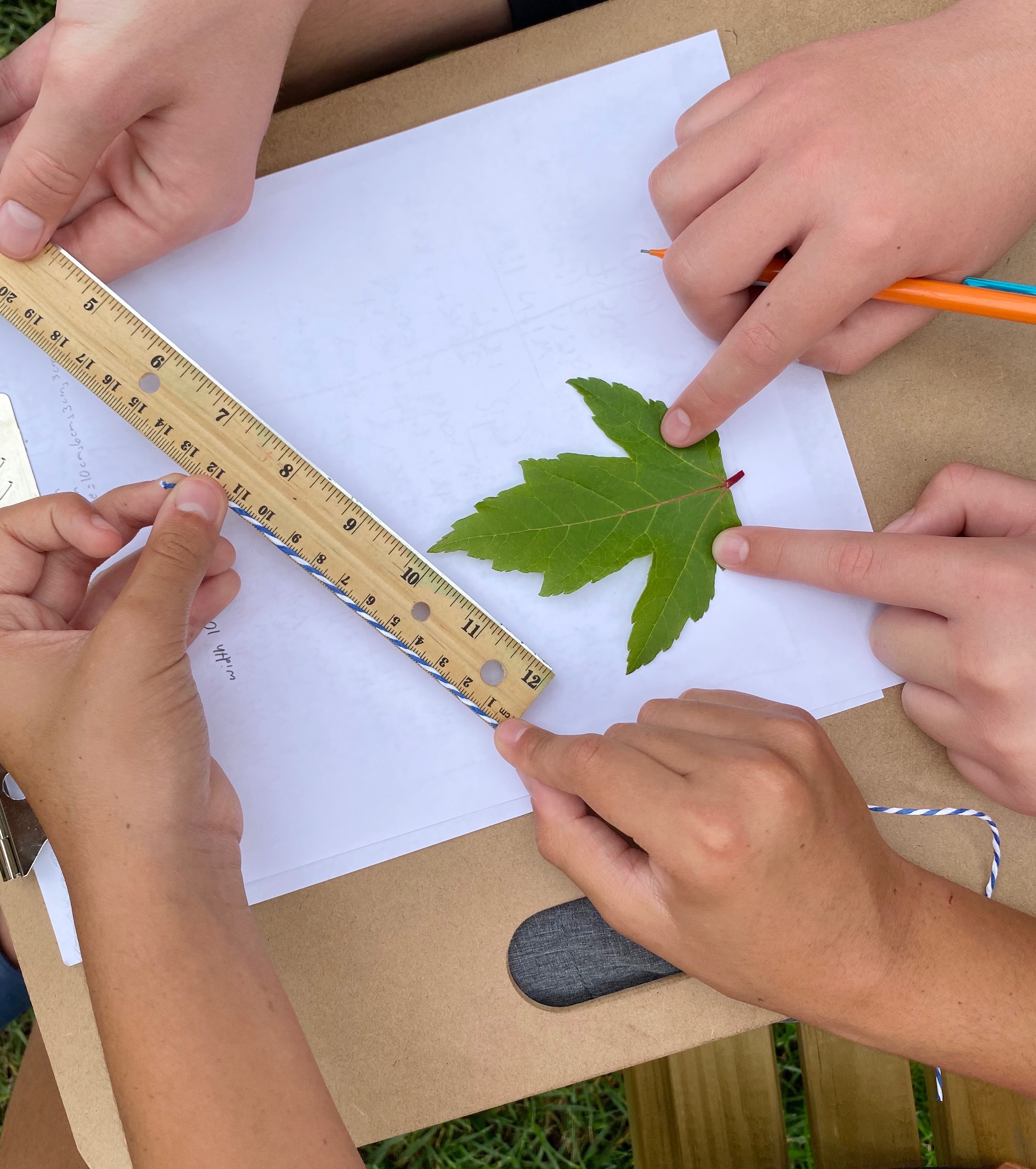 Grade Levels: Middle
Grade Levels: Middle
Target Audience: The partner school is located in a small, southeastern town in the United States and serves a population of families from diverse ethnic, language, and economic backgrounds, including immigrant families from Central American and Southeast Pacific countries.
STEM Discpline: Mathematics, Science
Description: This project is exploring how to productively coordinate instruction around data, statistics, modeling, and inference in middle grades mathematics and science classes. We will conduct design-based research to develop and study innovative tools that support students to generate knowledge about ecological systems by using models of variability to make inferences. In partnership with teachers from our partner school, we will develop two investigations in 6th and 7th grade science classes that will be coordinated with instruction in mathematics classes around data. Our research will focus on developing design principles for coordinating instruction, evidence about how students use ideas from mathematics classes to make inferences in science class, and evidence about how new questions in science class provoke a need for new mathematical tools.
Initial findings Related to Modeling: This project recently began in the spring of 2020. We anticipate that our project will contribute knowledge about how to help teachers support interdisciplinary learning goals as a collaborative effort across math and science, how students make use of mathematical ideas as epistemic tools to generate knowledge, and how new questions about ecological systems motivate a need for new mathematical tools. We are finding early on that key features related to developing students’ data competencies (such as type of variation and data, dimensionality, and mathematical ideas embedded in data models) may be invisible to science teachers that orient their instruction around questions for inquiry, and that learning goals for mathematics and science classes related to making inferences with data can create conflicts that undermine coherence for students.
Response to COVID-19 & Other Key Challenges: Coordinating instruction related to data across math and science is challenging because schools are built to separate disciplines more than coordinate them, and science and mathematics communities use the similar words in their goals, but often have different understanding or vision for data instruction. So, developing interdisciplinary practices, like making inferences with data, across multiple years of schooling is the biggest challenge we face as a project.
Products: This project’s funding recently began in the spring of 2020. We anticipate developing three types of products: 1) A design framework for coordinating disciplinary learning goals in math and science around the interdisciplinary practice of making inferences with data, 2) four integrated investigations for 6th and 7th grade, and 3) Exemplars of students’ reasoning as they create, revise, and use models of variability to make inferences about ecological systems.
Additional Resources
- Synthesis: Modeling in Science Education: A Synthesis of Recent Discovery Research PreK-12 Projects
- Related Spotlights
- Analyzing & Interpreting Data Across STEM Disciplines
- Problem Solving in STEM Education
- Teaching & Learning About Infectious Diseases (includes tools and activities for modeling infectious diseases)
- Cross-Project DRK-12 Presentations
- Using Models to Support STEM Learning in Grades K–5 | 6-12 (NSTA 2018)
- Scientific Modeling across the K–12 Continuum: Alignment between Theoretical Foundations and Classroom Interventions (DRK-12 PI Meeting 2016)